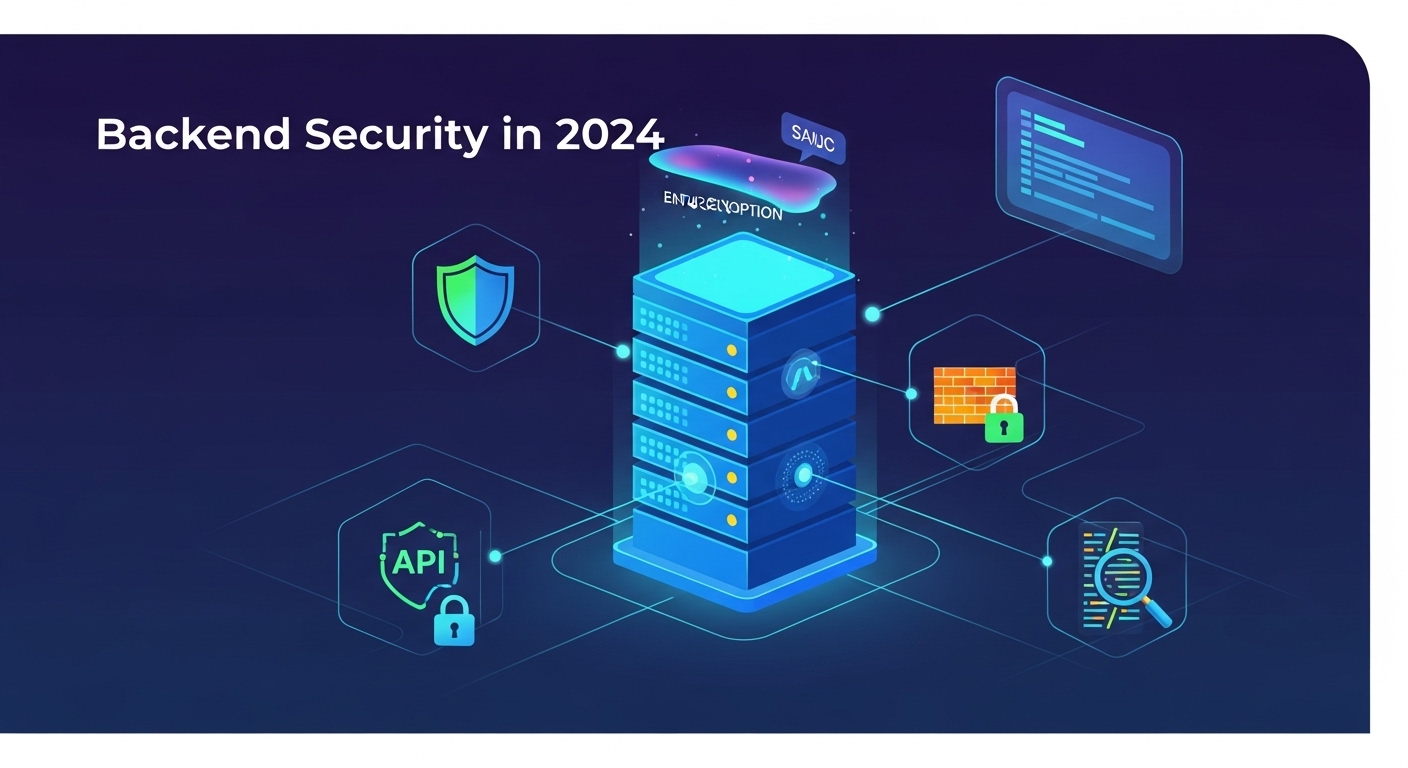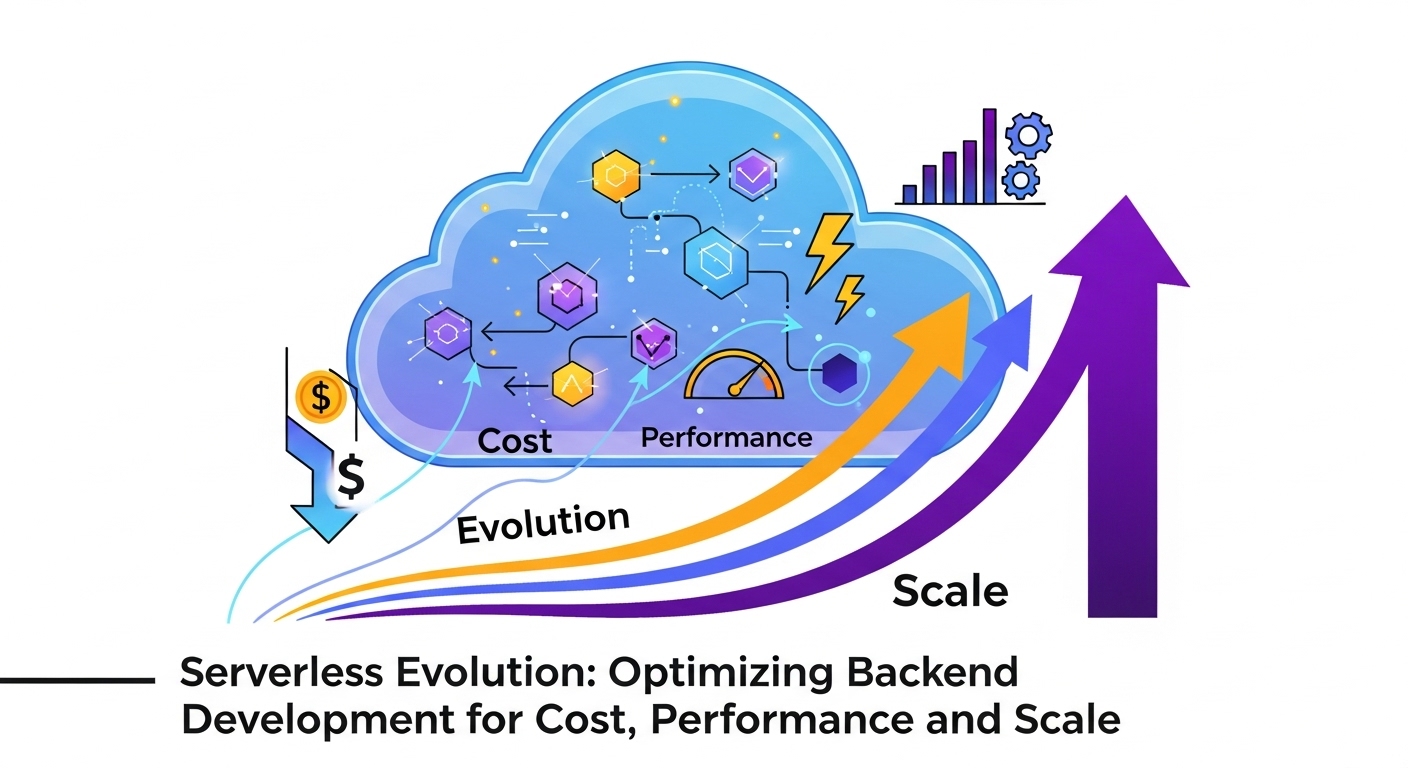Why Backend Security is More Critical Than Ever in 2024
In the world of web and mobile applications, the user interface often gets all the glory. It’s the sleek, responsive front end that users see and interact with. But as any seasoned professional in backend development knows, the real fortress is built behind the scenes. The backend is the engine room, the central nervous system that processes data, handles business logic, and communicates with databases. And in 2024, securing this fortress is not just a best practice—it’s an absolute necessity for survival.
Think about it. Every piece of sensitive user data, every transaction, every critical API endpoint lives on the backend. A breach here isn’t just a minor glitch; it can be a catastrophic event leading to massive data loss, financial ruin, and irreparable damage to your brand’s reputation. As attackers become more sophisticated, leveraging AI and exploiting complex supply chains, the old ways of thinking about security are no longer enough. We’ve moved beyond simple firewalls and password hashing. Today’s backend security is a dynamic, multi-layered discipline that must be woven into the very fabric of the development lifecycle.
The Evolving Threat Landscape
To build a strong defense, you first need to understand your enemy. The threats targeting backends in 2024 are more cunning and automated than ever before. Let’s break down some of the key challenges.
AI-Powered Attacks
Artificial intelligence is a double-edged sword. While we use it to build smarter applications, attackers are using it to launch more effective assaults. AI can analyze code for vulnerabilities at a scale and speed that humans can’t match. It can craft hyper-realistic phishing emails to trick employees, automate brute-force attacks with intelligent password guessing, and even generate polymorphic malware that changes its signature to evade detection. Defending against AI requires leveraging AI-powered security tools that can detect anomalies and predict threats in real-time.
API Vulnerabilities as the New Frontier
The modern application ecosystem is built on APIs. They are the conduits that connect microservices, mobile apps, and third-party integrations. This interconnectedness is powerful, but it also creates a massive attack surface. The OWASP API Security Top 10 list highlights critical risks like Broken Object Level Authorization (BOLA), where an attacker can access data they shouldn’t simply by changing an ID in an API call. Securing APIs is no longer an afterthought; it’s a primary pillar of backend security.
Supply Chain Attacks
Modern backend development relies heavily on open-source packages and third-party libraries. A developer might run npm install or pip install without a second thought, pulling in dozens or even hundreds of dependencies. Attackers know this. By injecting malicious code into a popular library, they can compromise every application that uses it. These supply chain attacks are insidious because they exploit the trust we place in the open-source community. Vigilance, dependency scanning, and maintaining a software bill of materials (SBOM) are now crucial defensive measures.
Core Strategies for Fortifying Your Backend
Faced with these threats, a proactive and layered security posture is essential. Here are the fundamental strategies every backend developer must master.
1. Authentication and Authorization Done Right
Authentication (AuthN) confirms who a user is, while Authorization (AuthZ) determines what they are allowed to do. Getting these wrong is like leaving the front door wide open.
- Embrace Modern Protocols: Use standards like OAuth 2.0 and OpenID Connect (OIDC) for handling authentication flows, especially with third-party clients.
- Secure Your Tokens: Use JSON Web Tokens (JWTs) with strong, non-guessable secret keys (using algorithms like HS256) or, even better, asymmetric keys (like RS256). Ensure they have short expiration times.
- Implement the Principle of Least Privilege (PoLP): Every user and service should only have the absolute minimum permissions necessary to perform their function. Never grant blanket admin access.
2. Robust Data Encryption (At Rest and In Transit)
Unencrypted data is a goldmine for attackers. You must protect it everywhere.
- Encryption in Transit: Always use Transport Layer Security (TLS) 1.2 or higher for all communication between clients, servers, and internal services. This is non-negotiable.
- Encryption at Rest: Data stored in databases, object storage, or on disk must be encrypted. Use strong algorithms like AES-256. Most cloud providers offer managed encryption services that make this straightforward.
3. Secure API Design and Management
Protecting your APIs is paramount. Follow these best practices:
- Strong Authentication: Every API endpoint, even internal ones, must require authentication. Use API keys, OAuth tokens, or other secure mechanisms.
- Input Validation: Never trust data coming from an API request. Validate everything—path parameters, query strings, headers, and the request body—against a strict schema.
- Rate Limiting: Implement rate limiting to prevent abuse and protect against Denial-of-Service (DoS) attacks.
- Use an API Gateway: An API gateway acts as a single entry point for all your APIs, allowing you to centralize security concerns like authentication, rate limiting, and logging.
4. Input Validation and Sanitization
This is one of the oldest rules in the book, yet it remains one of the most common sources of vulnerabilities. Never, ever trust user input. Any data that crosses the trust boundary from the client to your backend must be rigorously validated and sanitized to prevent attacks like:
- SQL Injection (SQLi): Use prepared statements and parameterized queries instead of string concatenation to build SQL queries.
- Cross-Site Scripting (XSS): While often seen as a frontend issue, stored XSS originates from the backend failing to sanitize data before saving it to the database. Always encode output correctly.
- Command Injection: Be extremely careful when executing system commands with user-provided data.
5. Regular Security Audits and Penetration Testing
You can’t fix vulnerabilities you don’t know about. Regularly schedule security audits, vulnerability scans, and third-party penetration tests. This proactive approach helps you find and patch security holes before attackers can exploit them. Treat the results of these tests as high-priority tickets for your development team.
Advanced Backend Security Measures
Once you have the fundamentals down, it’s time to level up your defenses with more advanced techniques.
Comprehensive Logging and Monitoring
When an incident occurs, your logs are your best friend. Implement structured logging that captures key events: successful and failed logins, API calls, data access, and permission changes. Centralize these logs and use monitoring tools to set up alerts for suspicious activity, like a high rate of failed login attempts from a single IP address.
Secrets Management: Don’t Hardcode Your Keys!
Your codebase should never contain secrets like API keys, database passwords, or encryption keys. Hardcoding them is a recipe for disaster. Use a dedicated secrets management tool like HashiCorp Vault, AWS Secrets Manager, or Azure Key Vault. These tools securely store, manage, and rotate secrets, providing access to applications on a need-to-know basis.
Adopting a Zero Trust Architecture
The traditional “castle-and-moat” security model, where you trust everything inside your network, is obsolete. A Zero Trust model operates on the principle of “never trust, always verify.” Every request, whether it originates from outside or inside the network, must be authenticated and authorized. This approach significantly reduces the blast radius of a potential breach.
The Role of DevSecOps in Modern Backend Development
Security can’t be a final step in the development process; it must be integrated from the very beginning. This is the core idea behind DevSecOps, which aims to “shift security left.” By integrating automated security tools into the CI/CD pipeline, you can catch vulnerabilities early when they are easier and cheaper to fix.
- Static Application Security Testing (SAST): These tools scan your source code for potential security flaws without running the application.
- Dynamic Application Security Testing (DAST): These tools test your running application for vulnerabilities by simulating attacks.
- Software Composition Analysis (SCA): These tools scan your project’s dependencies for known vulnerabilities.
By automating these checks, you create a security safety net that empowers developers to build more secure code from the start, making security a shared responsibility for the entire team.
Conclusion: Building a Resilient and Secure Backend
Backend security in 2024 is a complex but manageable challenge. It requires a holistic approach that combines robust architecture, secure coding practices, continuous monitoring, and a proactive mindset. By embracing the strategies outlined here—from mastering the fundamentals of authentication and encryption to adopting advanced concepts like Zero Trust and DevSecOps—you can build a backend that not only delivers powerful functionality but also stands as a resilient fortress against the ever-evolving landscape of digital threats. The security of your application, your data, and your users depends on it. Now is the time to review your practices and invest in building a more secure future.


